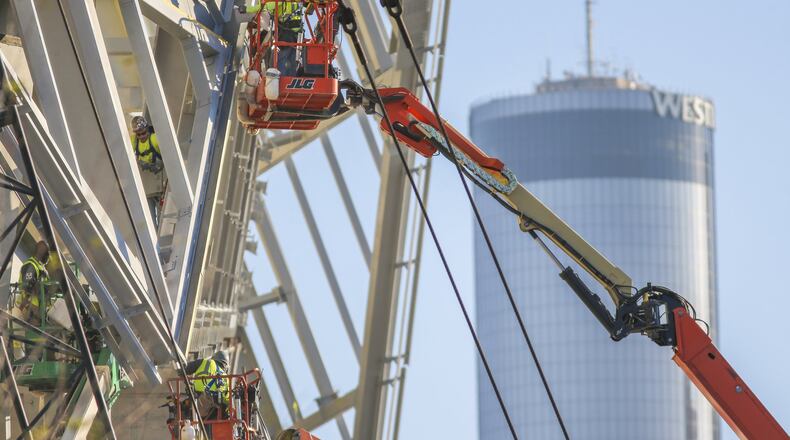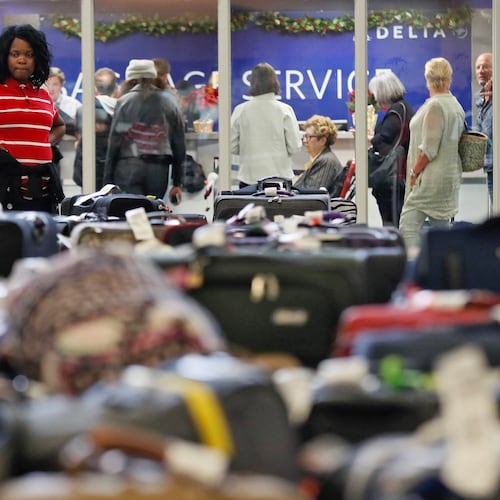Georgia’s unemployment rate edged up to 5.3 percent in November from 5.2 percent in October, the state Labor Department said Thursday.
The increase was something of a mix between good news and bad: After several years of solid job growth, thousands of Georgians entered the workforce in November, apparently encouraged to believe that their chances too were improving. The bad news was that not all of them found jobs.
That brought the number of officially unemployed to 264,098 people – far fewer than during the worst of the post-recession jobs crisis, but still a sign that the economy has not fully healed. And a historically high share of the unemployed – about one-third – have been looking for more than six months.
Still, Georgia’s economy added 9,900 jobs during the month and 98,700 jobs during the past year. So the modest decline in the jobless rate from 5.5 percent a year ago does not fully illustrate the improvement in the labor market.
Since the Great Recession ended, Georgia has seen nearly seven years of job growth, and it shows no sign of reversing, said Mekael Teshome, economist at the PNC Financial Services Group.
At its post-recession worst, the Georgia jobless rate was 10.5 percent. Before the recession it was under 5.0 percent. The very lowest rate on record was in November of 2000: 3.4 percent. But many economists start talking about “full employment” once it gets to about 5 percent.
Georgia has added about 575,000 jobs since hitting bottom. The expansion has been solid but unspectacular, Teshome said. “I think we are not quite at full employment yet, but I think we will get there in 2017. The unfortunate thing is that it took so long.”
The apparent tightening of the labor market was a key factor in the decision by the Federal Reserve this week to raise interest rates.
But if the labor market truly is tightening, the clearest sign will be rising wages as employers compete to find workers, Teshome said – and that won’t happen as long as the flow of people back into the workforce is stronger than the hiring.
The Labor Department said 21,761 more people came into the labor force during the month, and 15,697 of them found work. Since the beginning of the year, the labor force has surged by 186,888 – generally a sign that people who have been on the sidelines are encouraged by what they see of hiring to think it’s worth another try.
The unemployment rate is calculated by looking at the number of people who either have jobs or are actively looking. So it can go up when people who’ve been discouraged flock back from the sidelines into the hunt for a paycheck. That has made the past several months a race between company hiring and the influx of jobseekers, said Mark Butler, the state’s labor commissioner.
“For the third consecutive month, strong growth in our state’s labor force caused a slight increase in our unemployment rate,” he said. “However, in those same three months, we’ve seen more than 56,000 people become employed.”
Georgia’s rate is now significantly above the national rate of 4.6 percent. It has not been below the national average since 2007, which was before the economy slipped into recession. Metro Atlanta’s rate for November will be reported next week.
Even so, the surplus of local talent doesn’t apply to all types of jobs, said Lars Minns, head of human resources operations and talent acquisition at Mercedes Benz said the company, which recently moved its North American headquarters to Sandy Springs.
About half the company’s 600 headquarters employees were hired locally, and there were nearly 12,000 applications, he said.
But there was no glut of tech workers who account for almost one-fifth of the workforce, Minns said.
“Anyone in the I.T. realm is highly sought after. For the supply of people, there is just too much demand.”
As a result, Mercedes finds itself paying more to get tech workers, leaving some slots open and sometimes using contractors, he said.
Statewide, the strongest sector during November was professional and business services – the corporate sector — which expanded by 8,200 positions. Other growing sectors included manufacturing, which added 3,000 jobs; education and health services, which gained 2,200; government, which rose 1,800; and construction, which grew by 1,400.
Some job losses came in trade, transportation and warehousing sector – which dropped by 4,600. That category includes retail and logistics, which should grow during the ramp-up to the holidays. That decline could mean holiday hiring and spending were not as strong as expected.
Information services shed 1,400 jobs, despite widespread talk of surging tech companies and demand for tech skills. It may be that the tech boom is not quite as robust as its hype, or that the losses are in older types of jobs.
The statewide data are adjusted to account for seasonal patterns.
November jobless rates in Georgia
2007: 5.0 percent
2008: 7.9 percent
2009: 10.5 percent
2010: 10.5 percent
2011: 9.8 percent
2012: 8.6 percent
2013: 7.5 percent
2014: 6.5 percent
2015: 5.5 percent
2016: 5.3 percent
November job growth in Georgia
2007: up 600
2008: down 25,200
2009: down 3,500
2010: up 100
2011: up 6,800
2012: up 9,200
2013: up 6,200
2014: up 14,200
2015: up 11,000
2016: up 9,900
Source: Bureau of Labor Statistics
About the Author
Keep Reading
The Latest
Featured



